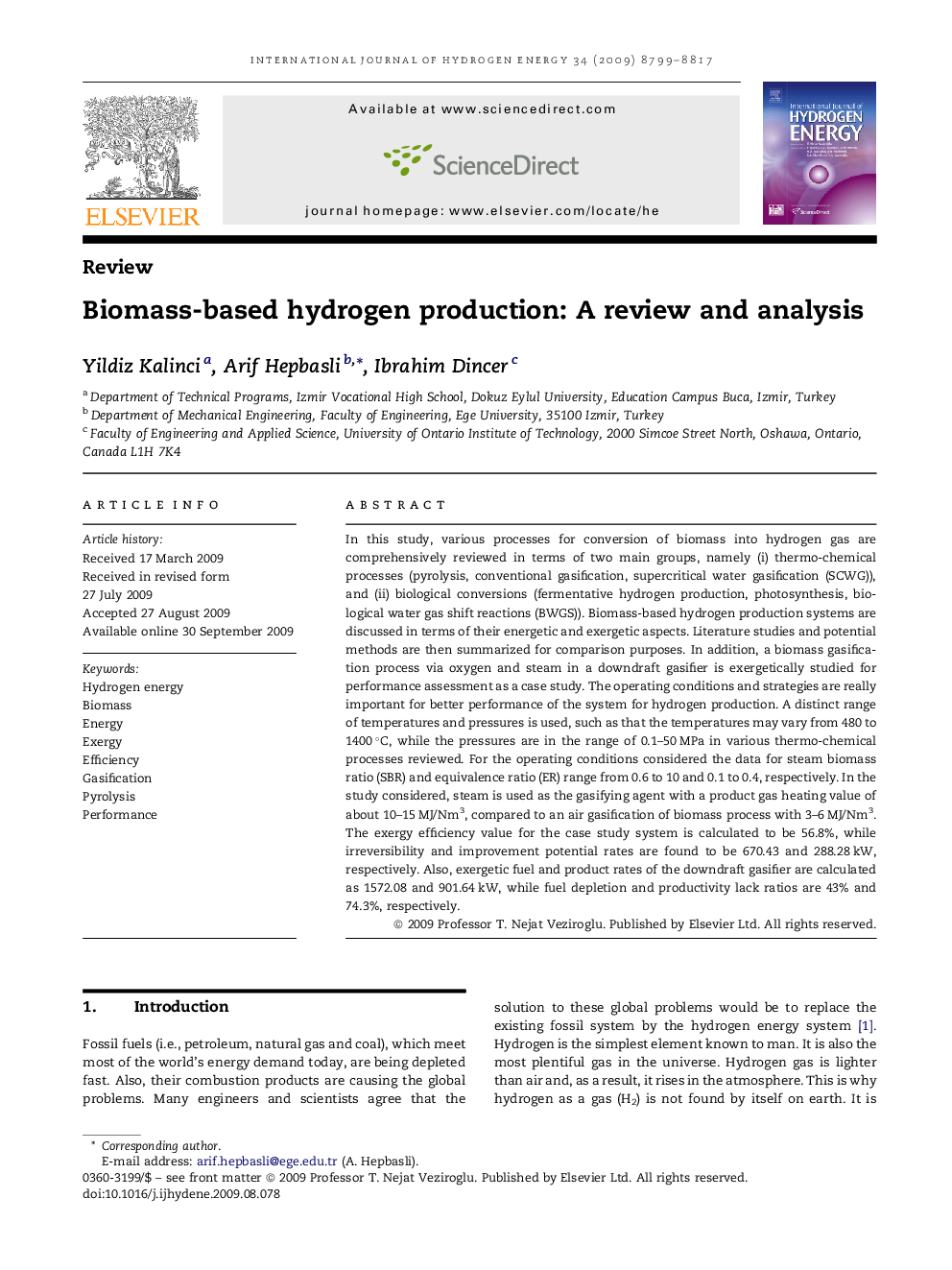| Article ID | Journal | Published Year | Pages | File Type |
|---|---|---|---|---|
| 1283011 | International Journal of Hydrogen Energy | 2009 | 19 Pages |
In this study, various processes for conversion of biomass into hydrogen gas are comprehensively reviewed in terms of two main groups, namely (i) thermo-chemical processes (pyrolysis, conventional gasification, supercritical water gasification (SCWG)), and (ii) biological conversions (fermentative hydrogen production, photosynthesis, biological water gas shift reactions (BWGS)). Biomass-based hydrogen production systems are discussed in terms of their energetic and exergetic aspects. Literature studies and potential methods are then summarized for comparison purposes. In addition, a biomass gasification process via oxygen and steam in a downdraft gasifier is exergetically studied for performance assessment as a case study. The operating conditions and strategies are really important for better performance of the system for hydrogen production. A distinct range of temperatures and pressures is used, such as that the temperatures may vary from 480 to 1400 °C, while the pressures are in the range of 0.1–50 MPa in various thermo-chemical processes reviewed. For the operating conditions considered the data for steam biomass ratio (SBR) and equivalence ratio (ER) range from 0.6 to 10 and 0.1 to 0.4, respectively. In the study considered, steam is used as the gasifying agent with a product gas heating value of about 10–15 MJ/Nm3, compared to an air gasification of biomass process with 3–6 MJ/Nm3. The exergy efficiency value for the case study system is calculated to be 56.8%, while irreversibility and improvement potential rates are found to be 670.43 and 288.28 kW, respectively. Also, exergetic fuel and product rates of the downdraft gasifier are calculated as 1572.08 and 901.64 kW, while fuel depletion and productivity lack ratios are 43% and 74.3%, respectively.
